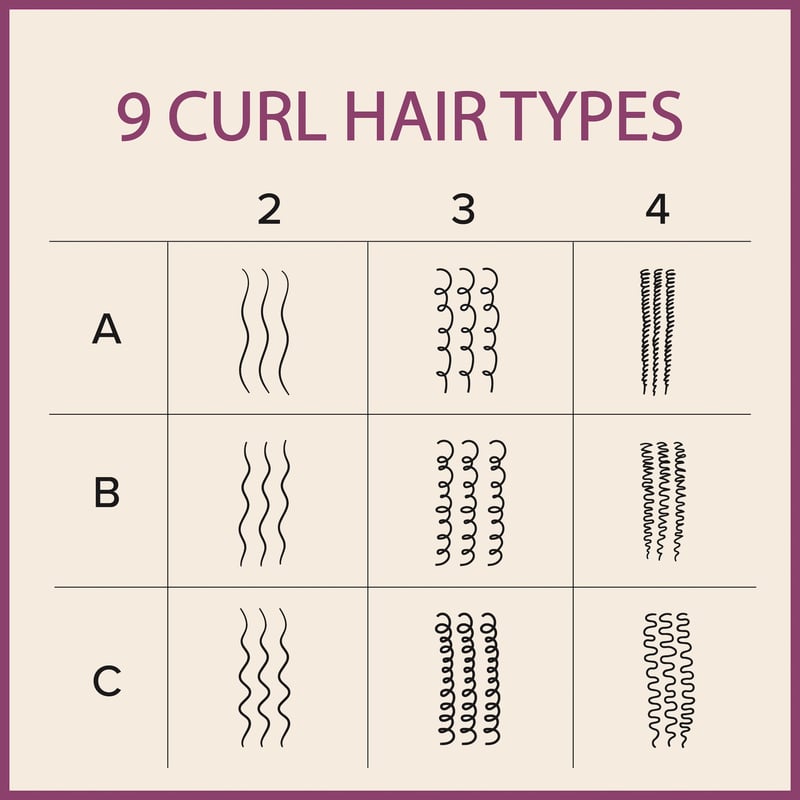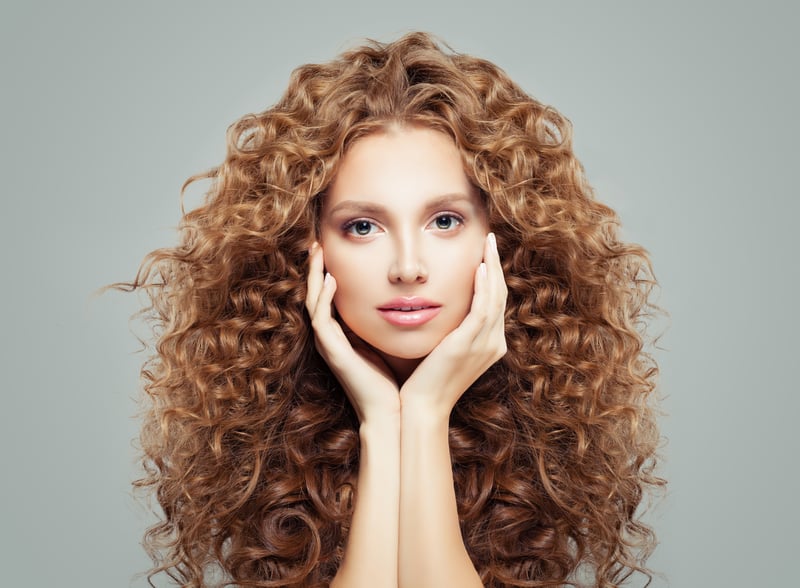
To understand this better, let's take a look at the Curly Hair Chart.
The Curly Hair Chart is a simple tool developed by many prominent hairstylists after years of carefully studying curly hair. It is an extremely helpful tool that lets you understand different types of curls at the glance.
-
As you can see, the chart features two axes with numbers and letters.
-
The numbers tell you the texture of your hair.
-
The letters give the further classification of curl types.
To put it in layman’s terms, type 1 is straight hair, type 2 is wavy hair, type 3 is curly hair and type 4 is coily hair.
However, further classifications are made based on the width and type of your curl or wave. Hence A, B, and C are subclassifications with A having wider curls, C featuring tighter curls, and B lying somewhere in the middle.
Pretty straightforward right? However, there are further subclassifications of the hair based on your hair diameter. These range from A to C with type A featuring the widest curls and the type C having the most compact curls.
First let's talk about curly hair! Curly hair can be classified as:
Type 3: Curly hair

Curly hair, of course needs no introduction. This type of hair can often look wavy or even straight (surprisingly!) when it is wet, however the curls form a swirling 3D pattern once dry. Each curl has a texture and pattern of its own, making it vital to understand your curl type.
This type features wide bouncy curls that are easy to manage and style. The Type 3A curly hair is bouncy, shiny and soft to the touch. This type of hair is also low-maintenance.
Type 3B hair is the one that comes to mind when we think about typical curly hair. The curls in this type are well defined and voluminous. However, this hair type can suffer from frizziness and should be taken care of meticulously.
Type 3C hair is defined by tight curls that are extremely taut and packed. Because of the texture of this hair type, it can be immensely difficult to brush and detangle. Hence, investing in a good detangling brush is sound advice.
Type 4: Twisted hair

People often mistake twisted hair for curly hair, however these two hair types are nothing alike. This hair type comprises a tight zig-zag pattern or tightly-wound S shaped curls. Sometimes the hair can feature a beautiful combination of the two.
This hair is distinguished by cute S shaped strands that loop themselves into tight rings. The Type 4A hair can become extremely frizzy and hence use of lots of conditioning products is recommended.
- Type 4B: The Zig Zag party
This gorgeous curly hair type is extremely fun to look at and is defined by funky zig-zag patterns. This type of hair is versatile to style and is very strong.
This curl type is defined by delicate coils that form a zig-zag pattern. The Type 4C hair is extremely fragile and requires extra hair-care. Choosing the right styling products is a must!
The amazing science behind the curl type rankings
Now that we know that each curl is different and there is a meticulous system in place to rank and classify them, let's take a look at the science behind the rankings to get to the roots of understanding curly hair. How exactly do these rankings work and what parameters do they consider while classifying types of curls?
Read along to know more.
Your curl type is typically determined by the shape of your hair follicle. People with curly hair have oval hair follicles that give it its lovely curly texture. Further parameter that is considered while ranking your hair type is your curl type.

.png)




.jpg)
